Portrait lens. Which one? 30 short portrait lenses compared on APS-C.
I should make it clear right from the beginning…
Who’s car is the best? Who’s partner is the most sexy one? Who has smartest kids? Who has largest… house?
If you know the answer on any of the questions above, you will be disappointed in my conclusions.
But if you want to get few basic informations and see test results in the controlled environment, of 30 different lenses in the focal range between 70 and 105mm, you should keep reading.
Here are all 30 contenders next to each other.
1-10
11-20
21-30
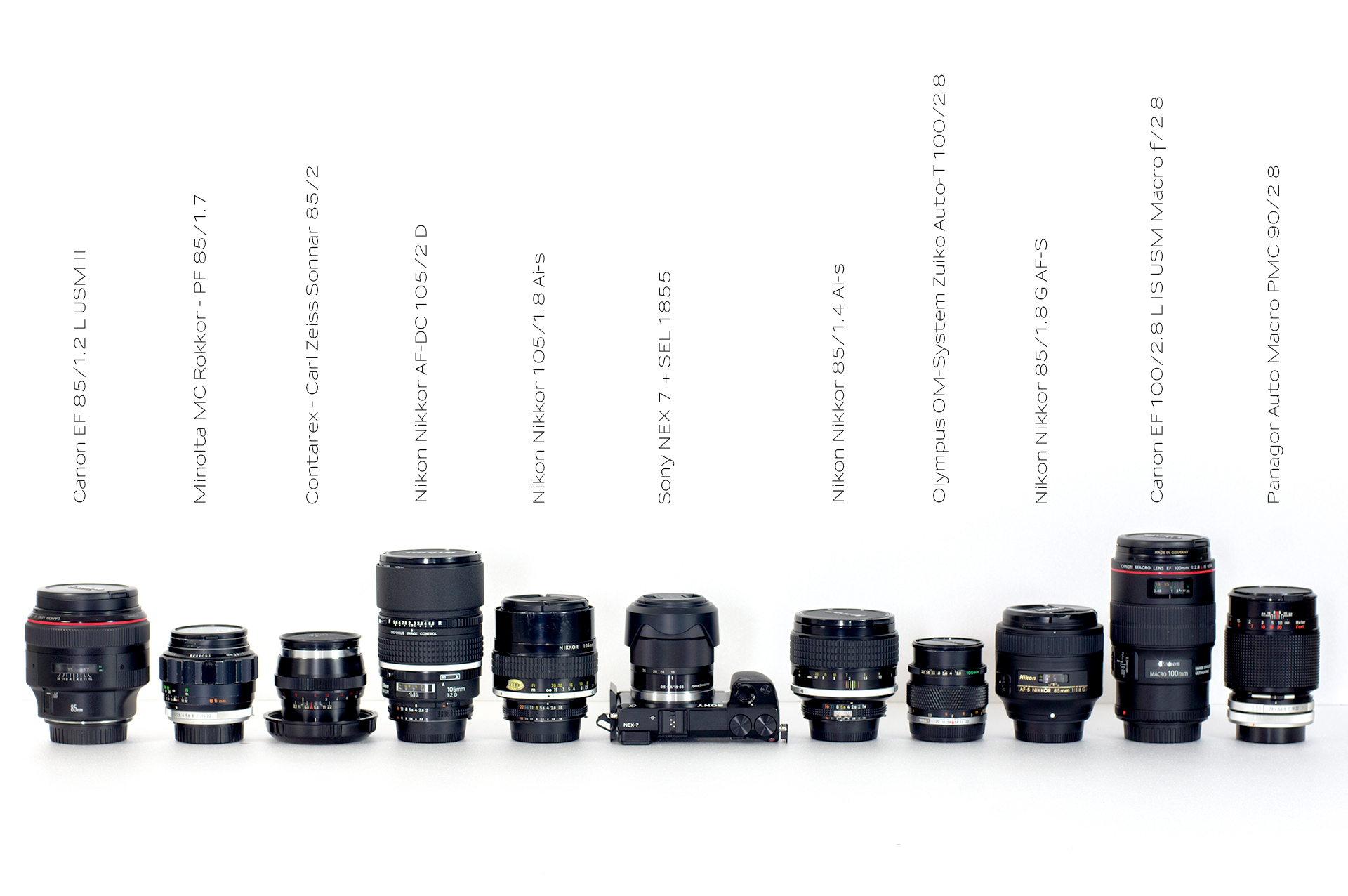
In the middle, there is always NEX 7 with SEL 1855, just to give you an idea about sizes. (I could also put instead, the box of matches to make lenses look bigger, or our President Mr. Zemans ego, to make them look as a dust particles, but NEX 7 was a fair compromise)
Don’t forget that different adapters are required for mounting any of the above lenses on E-mount or MFT, and adapters could be very large. In the case of Carl Zeiss Jena Biometar 80/2.8 i.e., I left one adapter (Pentacon Six to Canon EOS) already mounted, because the one for E-mount comes on top.
About this test…
Bellow is my model – Eiri. (Thank you Martin for giving her a name. Eiri means sharp in Japanese, at least Martin told me so :-))
You will see Eiri in my studio set-up, with some other girls behind. There is also Pink Panther and some strange things in the background.
BTW, Eiri is a real professional. She always looks good, no matter who did make-up, and she can stand still for hours, unless she fall by accident. That make my test more comparable across the lenses, but it also makes it slightly boring, in comparison to… acts i.e.
Of course, the best way to test portrait lenses will be in a real life. Unfortunately I wasn’t gifted with that one 🙁
When I started to think about this test, I knew that usual testing procedures wouldn’t tell me much about which lens to choose, or recommend (to my friends, but also to my no-friends :-)).
Think about MTF chart i.e… It might give the figures, which lens is sharpest at which apertures, but are you sure that you are brave enough to snap your mother in low in the morning, with razor sharp lens? Or your wife while looking for the make-up bag of wonders?
Or even yourself in the mirror anytime?
Flaring and loss of contrast are usually bad thing. But with the portrait lens, it is not always the case. I am sure that you had already seen brilliant low contrast portraits with tons of flares and other aberrations on photo web sites.
Our dear mother in low, usually look most beautiful in those low contrast images, or in the strong back-light with tons of flares. (Heavy fog also works, but it’s never there when you need it.)
Some of those lenses, used with the proper adapter, will allow auto focus. There are several nice Minolta and Sony A-mount lenses, that you can also consider to use with LE-EA2 or LA-EA4 (with upcoming A7/7r), such as Sonnar 85/1.4, but if you are after arranged portraits, manual focus will give you more consistent results.
This is because we usually want to isolate our subject from the background and thus we need shallow DOF. With such a shallow DOF, it is hard to achieve critical focus, which are often eyes or even one eye of our model.
The focus area, that is used for AF has different shape than related little square on the screen, and placing it above eye, doesn’t always guarantee proper focus. Instead of eye, we can end with focus on nose, or eyebrow and the sparkle in the models look, will be lost.
Considering as being written, that standard values doesn’t say much, I decided to create the value system, quite different from what we are used to see in tests and reviews. Here is what I come with:
Character defining values (no scoring).
Those values are not good or bad – they are different and you should think of desired result, prior to choosing the proper tool. (Lens)
1. Contrast – (High, medium, low).
High contrast is what most of as are looking for. But for portraits, it is not always welcomed. Therefore, it is not good or bad…
2. Color shift tendency
This might be caused by many factors including age of tested lenses, different coating or irregular lighting flickering (I don’t think it occurred, but I used mixed permanent light sources). Lenses tends to shift toward warm (mainly yellow), purple, green or they can be neutral. I measured my scene at 4300K and +30 tint toward magenta.
3. Glow. (High, medium, low).
Wide open, many old lenses have that soft glow around edges. It’s kind of blooming if you like it better. It can be caused by lack of coating, haze, dust, or simply optical aberrations. But for portraiture, this effect is often desired, so I can’t value the lenses according the level of glow wide open. It was and still is a part of the design of many lenses even today.
4. Sharpness – WO (wide open). (High, Medium, Low).
It is more about accutance and it is rather about general lens behavior, certainly not to be evaluated in exact figures. As noted above, sharpness is not always what a portrait photographer will look for, especially wide open.
5. Bokeh – (Smooth, Harsh, Busy, Swirly, Nervous, Pastel, Circular).
Take whatever you like, those are my attributes. Just note, that I am not talking about the amount of blur, but the character (quality) of blur.
I recently received the link to the best article about Bokeh that I ever read, from Jakub Trávník. You shouldn’t miss this one! On Bokeh
Values for scoring from 1-5
To make this comparison more interesting, I decided to add some attributes in the scoring system. But that doesn’t mean in most cases, that lens with lower score is better. You might need only one great achievement such as speed i.e. and you are ready to compromise all others.
6. Speed. (1=Super fast (f/1.0-f/1.2), 2=Moderate (f/1.4-f/2), 3=Slow (f/2.5-f/3.5), very slow (f/4), not a portrait speed – (f/4.5 and smaller).
I consider maximum speed to be one of the major differentiator among lenses in general. It is true, that if the slower speed suffice you, you shouldn’t pay many times more, just for slightly faster lens. You will not see the difference at comparable speed in most cases. But, this little extra of super fast lenses, gives you more opportunity if you know how to use it.
7. Size (1=small, 2=rather small, 3=moderate, 4=rather heavy, 5=don’t turn around fast in crowdy places).
I will refer to the size including adapters, because that is how you will use any of those lenses with third party camera.
8. Weight (1=where’s my lens, 2=light, 3= moderate, 4=damn what a brick!, 5=Always take Sherpa with you.)
9. Mojo (1=lens that might make your mother thinking that you are talented, no matter what you shot, 2=lens that might make your mother and father thinking that you are talented if you shot your kids, 3=Lens that will not hide your talent if there is any to be shown, 4= Lens that leaves all on you, so no cheating at all. You need to master it, if you want something little extra in your images, 5=It’s all about you. If you can make the image of white wall to look sexy, you might be happy with it. In other words – sterile, no charisma, no character, just pure reproduction tool.)
10. Aberrations (CA, PF, LoCA values from 1-nothing to worry about to 5-why everything is purple)
Those are most annoying aberrations and quite a few lenses in this category, does suffer from them.
11. Build quality (1=You can use it as a nut cracker if you like, 2=You can occasionally give it to your toddler to play with, 3=Solid, but don’t let it fall on concrete, 4=Be careful when mounting or using it, do not push too hard, 5=Prey before usage!)
12. Sex-appeal (1= Sorry… it never happened to me before.., 2=The cutest thing you ever held in your hand, 3= Still hotter than sexy zombie, 4=Still hotter than your math teacher from the high school, 5=the only uglier thing is Frankensteins shaver.)
You might say, that this one is ridiculous, and you will be right. But… wouldn’t you like to look cool, original and “artistic”, while taking snaps of your running Shi-tzu? At the end – why buying Rolex, when Swatch will do the same…
13. Price (1=Cheap as my humor, 2=Cheap, but politician promises are cheaper, 3=not so cheap, but if you can afford it…, 4=OMG, Santa Claus is the only chance, 5=Welcome to GAS Asylum, there is one empty bed next to mine.)
Scoring summary:
13-15 points = The one of its kind (or if some producer, send me some extra money)
16-20 points = You will love it
21-25 points = You will be happy with it, but few things might annoy you
26-30 points = There are better lenses
That’s it. For most lenses, you can find informations on the Web, so I wouldn’t write all details, because it is very time consuming. But if you have some original informations about some of them, or photography that you think will be useful for the community, I will be happy to post it and will give you credit of course. In such a case, send me email, please.
If you are interested in any of those lenses, but you live in area where finding one is hard, send me an email. Prague is not bad place for finding some of those for reasonable price in solid condition. (I am not sending anything in advance, so no fraud please).
I might also sell soon few of my lenses, and I will post complete list here on the blog.
1-10
(Navitar 75/1.3, Jupiter-9 8,5cm/2, Ernst Leitz Wetzlar Elmar 9cm/4, Voigtländer Color-Heliar 75/2.5, Canon FD 85/1.8, Carl Zeiss Sonnar T* Contax-G 90/2.8, CZJ Sonnar 8,5cm/2, Leitz Wetzlar Elmarit-R 90/2.8, Samyang 85/1.4 AS IF, Meyer-Optik Görlitz Trioplan 100/2.8)
11-20
(Helios 40-2 8,5cm/1.5, Carl Zeiss Jena Pancolar electric 80/1.8 MC, Takumar Super-Multi-Coated 85/1.8, Meyer-Optik Görlitz Orestor 100/2.8, Carl Zeiss Jena Biotar 7,5cm f/1.5, Carl Zeiss Jena Biometar 80/2.8, Meyer-Optik Görlitz Telefogar 90/3.5, Carl Zeiss Jena Tevidon 70/2.8, Carl Zeiss Jena Tevidon 100/2.8, Som Berthiot Tele-Cinor 75/2.5)
21-30
(Canon EF 85/1.2 L USM II, Minolta MC Rokkor – PF 85/1.7, Contarex – Carl Zeiss Sonnar 85/2, Nikon Nikkor AF-DC 105/2 D, Nikon Nikkor 105/1.8 Ai-S, Nikon Nikkor 85/1.4 Ai-S, Olympus OM-System Zuiko Auto-T 100/2.8, Nikon Nikkor 85/1.8 G AF-S, Canon EF 100/2.8 L IS USM Macro, Panagor Auto Macro PMC 90/2.8)
To help this page survive, your donation will be highly appreciated.
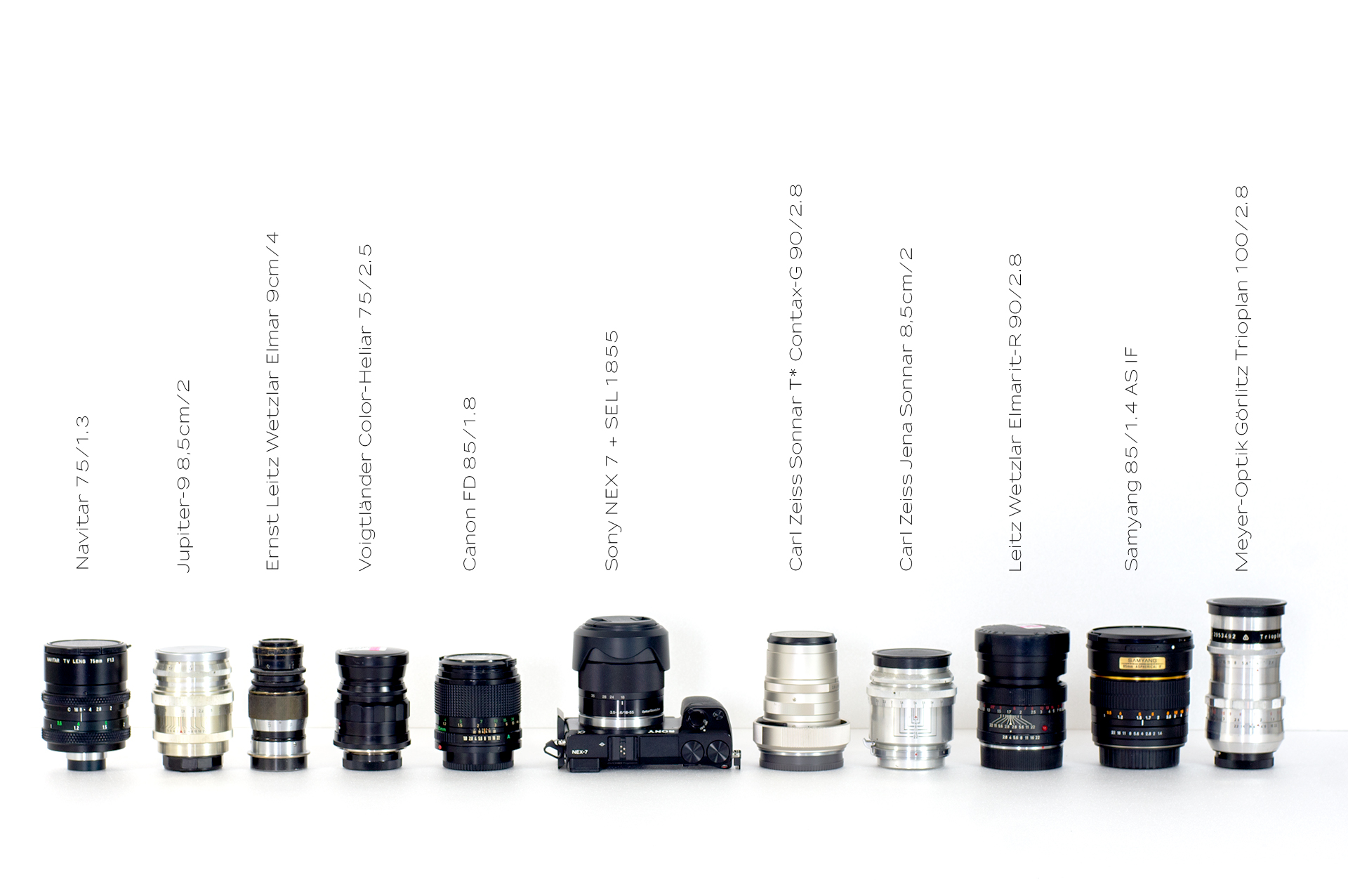
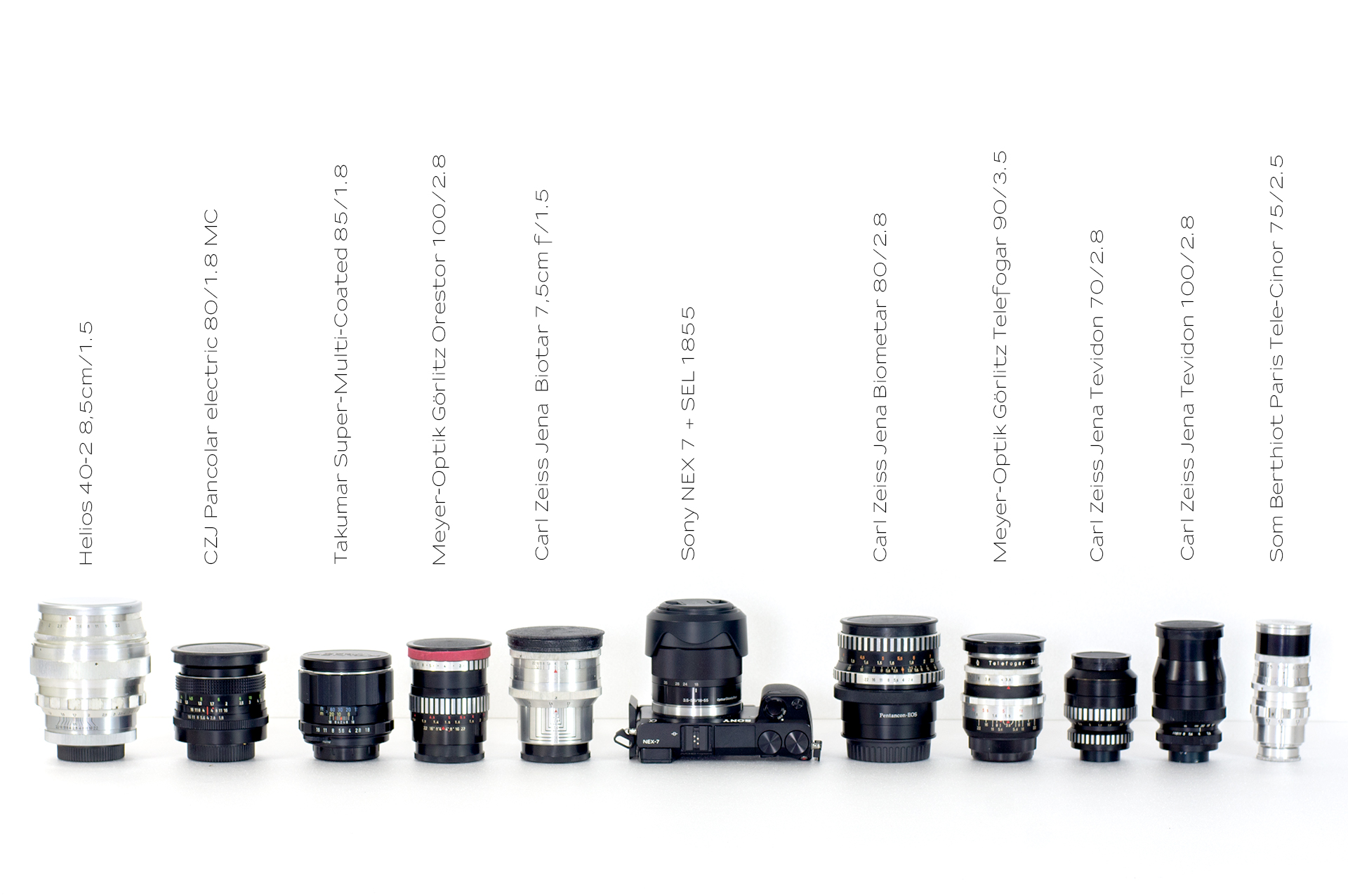

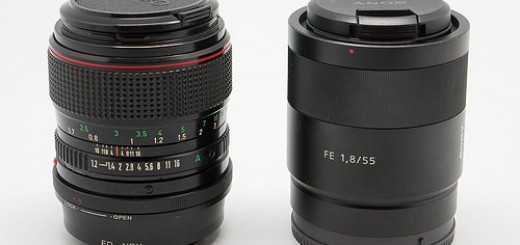
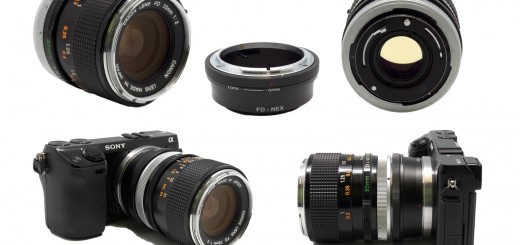
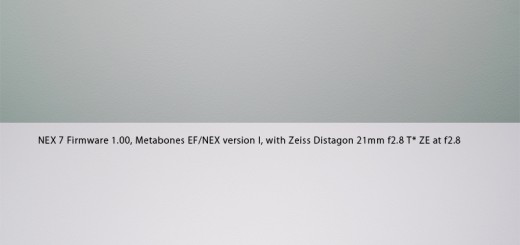











Great work and very comprehensive. Just wanted to post a comment to say thanks for taking the time to do this comparison. It should be a lot of help for people comparing lenses!
Thanks Arrvon. I am glad that you liked it.
Cheers,
Viktor
Thank you Viktor.
One of the best and most helpful articles on entire web that helps me to decide to chose a vintage lens.
Thanks Milan!
All these tests are quite useless considering that with the NEX 7 you are not using the most critical parts of the lenses. You only use the center, which is the best part. A pity because there are very interesting photographic objectives.
Hi Pep, useless are comments like this.
When this test was performed, there weren’t mirrorless full frame cameras on the market. Since this is free site, I might make new tests with full frame cameras, or might not, it’s purely my choice and you can move on to the site that better suits your needs. There are still many photographers using APS-C sensor, do you think it is useless for them too?
Cheers,
Viktor
The Contax 90mmf2,8 is one of the sharpest lenses I’ve encountered. Sharp right open from the start.
Just use it with the Fotodiox Contax (g) NEX adapter. Very easy to focus but don’t find it very easy to and leave the adapter in place, changing the adapter is another issue…